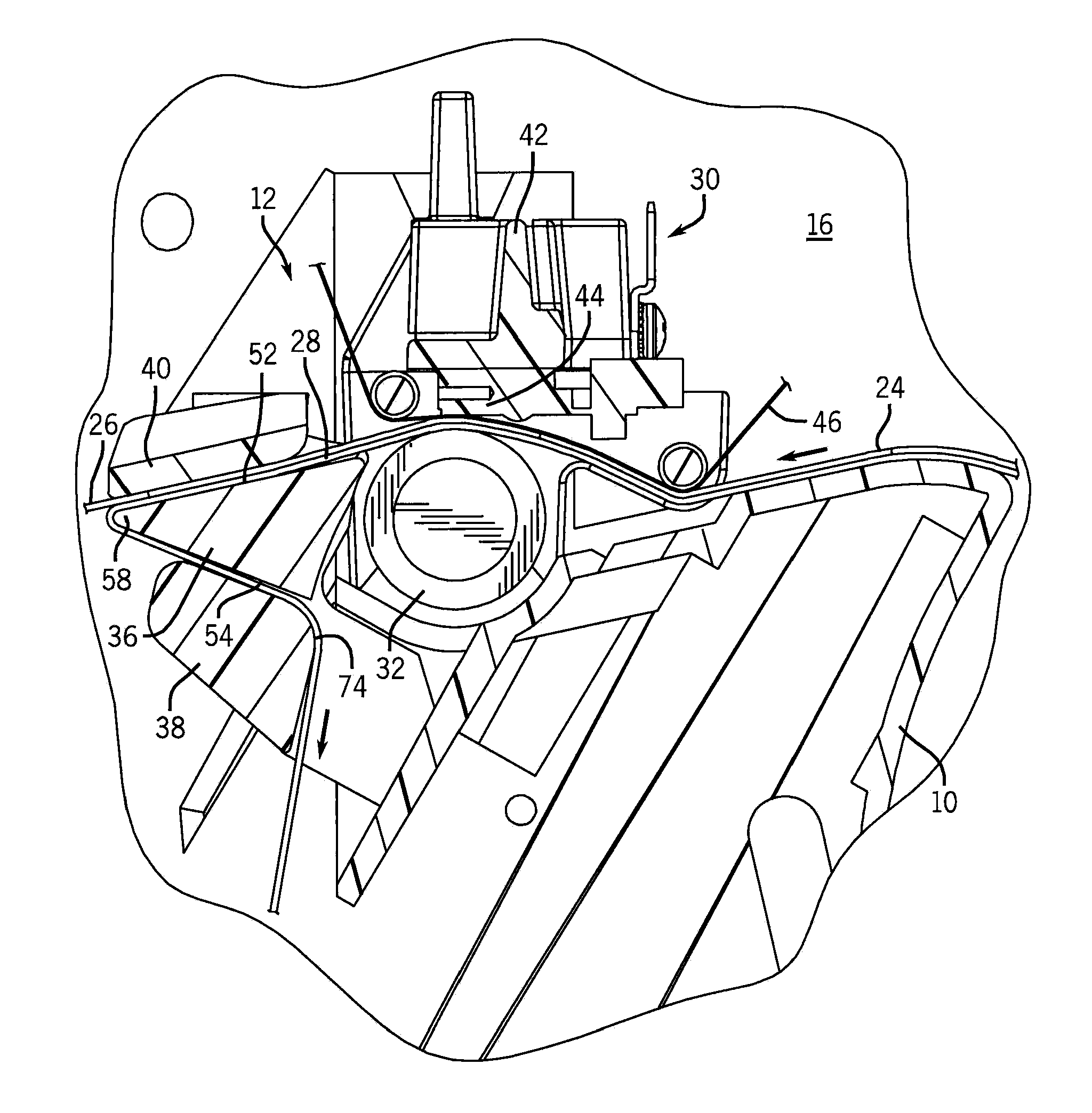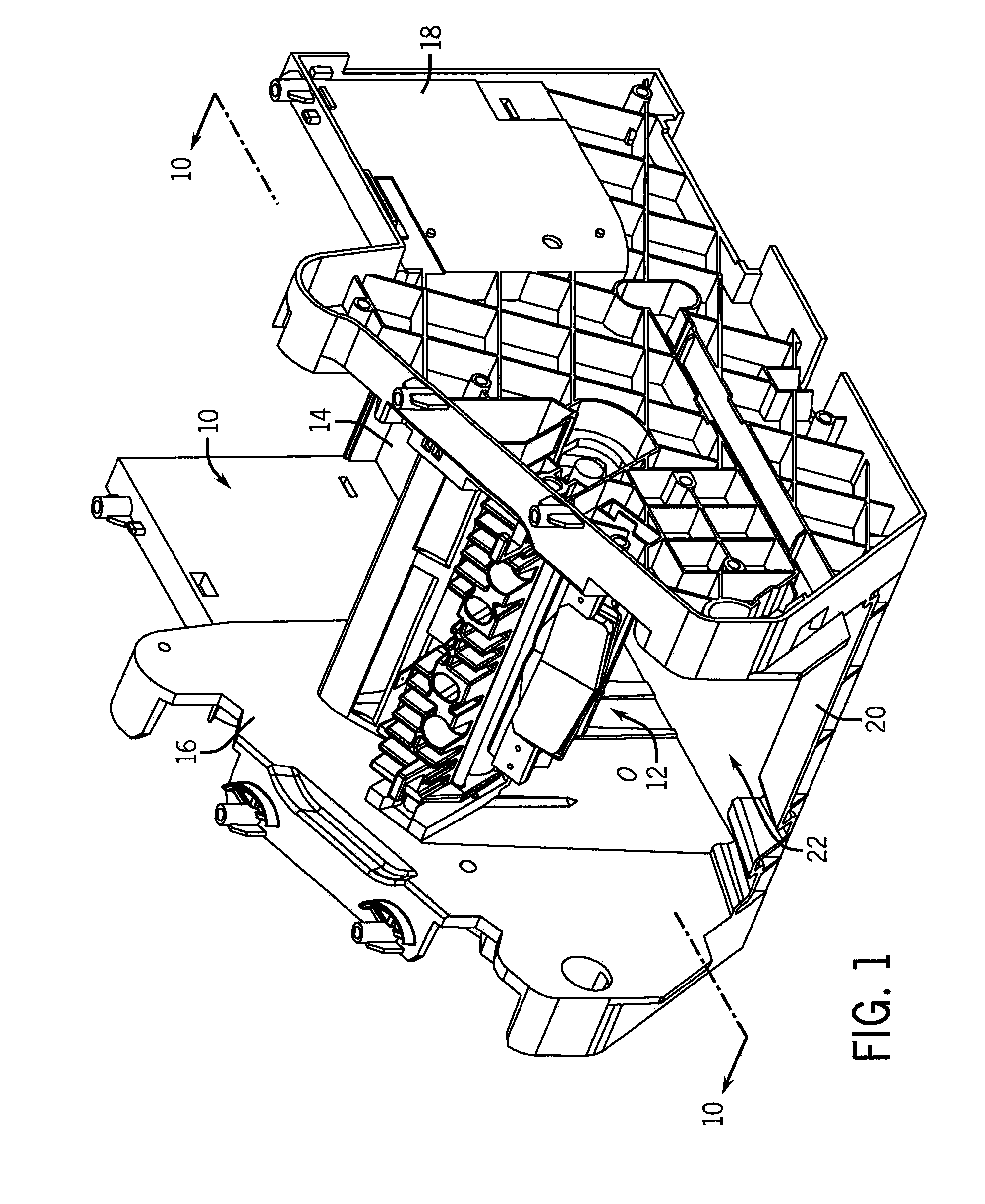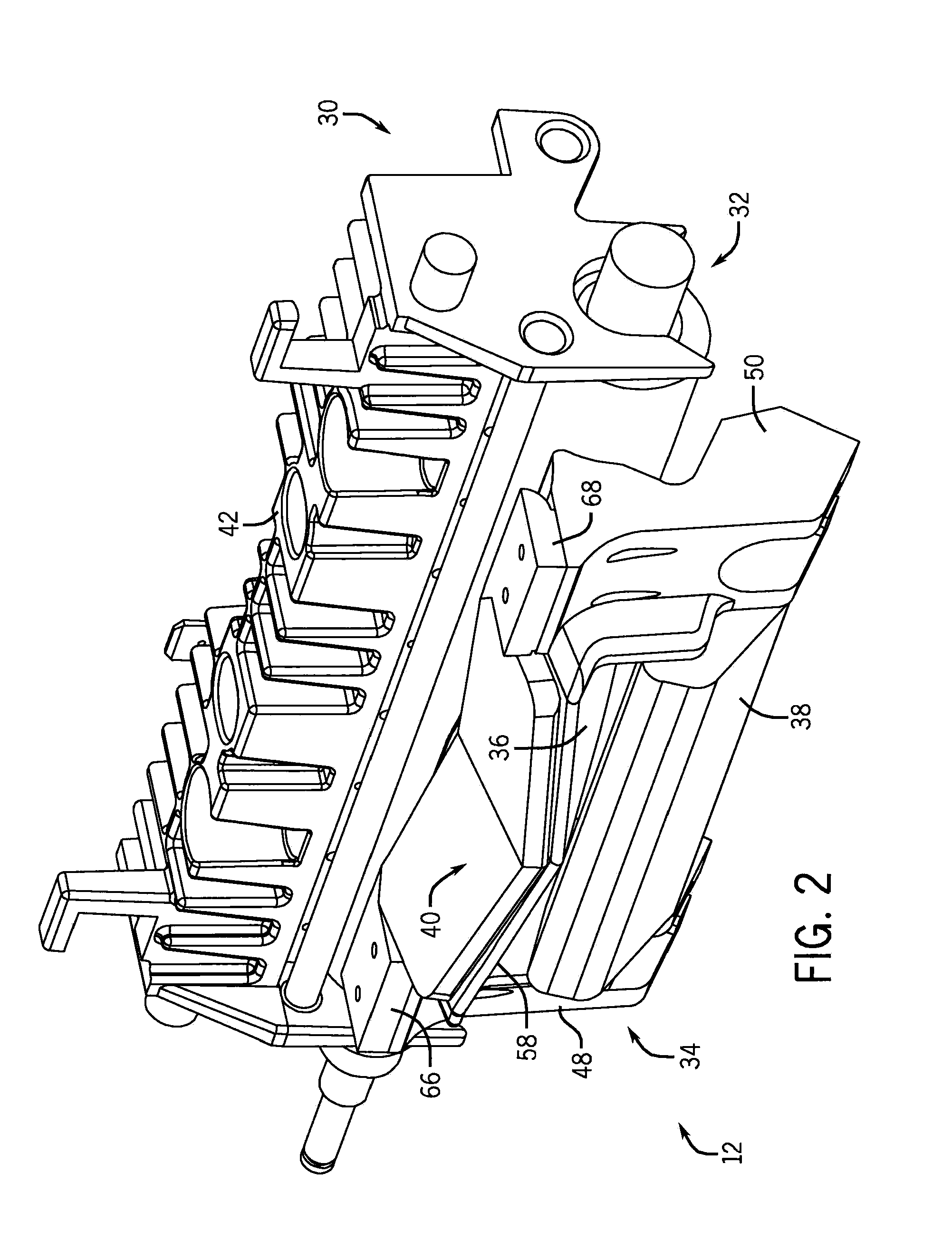Label dispensing device and method
a technology for dispensing devices and labels, which is applied in the direction of manual label dispensers, transportation and packaging, packaging, etc., can solve the problems of waste of web materials, need to increase the spacing between the labels on the web, etc., and achieve the reduction of backfeeding or elimination, the effect of reducing the distance between the print head and the peeling edge of the dispensing member
- Summary
- Abstract
- Description
- Claims
- Application Information
AI Technical Summary
Benefits of technology
Problems solved by technology
Method used
Image
Examples
Embodiment Construction
[0027]Referring first to FIG. 1, a portion of a printer is shown for printing of labels on a continuous liner or web (not depicted in FIG. 1, but shown in the cross-section of FIG. 10) and for subsequently separating the printed labels from the liner. The printed labels are separated from the liner by bending the web in a direction transverse to the direction of travel of the web path and then turning the web over a peel edge such that the label, which is more rigid than the liner when bent in the transverse direction, continues forward and separates from the liner while the liner is turned back.
[0028]As shown in FIG. 1, the illustrated portion of the printer includes a housing 10 that supports a label dispensing device 12. The housing 10 and the label dispensing device 12 are typically received in a larger housing or a case that includes not only the illustrated components, but also other components such as, for example, components that support a supply of the web (e.g., a roll or ...
PUM
| Property | Measurement | Unit |
|---|---|---|
| acute angle | aaaaa | aaaaa |
| rake angle | aaaaa | aaaaa |
| radius | aaaaa | aaaaa |
Abstract
Description
Claims
Application Information
 Login to View More
Login to View More - R&D
- Intellectual Property
- Life Sciences
- Materials
- Tech Scout
- Unparalleled Data Quality
- Higher Quality Content
- 60% Fewer Hallucinations
Browse by: Latest US Patents, China's latest patents, Technical Efficacy Thesaurus, Application Domain, Technology Topic, Popular Technical Reports.
© 2025 PatSnap. All rights reserved.Legal|Privacy policy|Modern Slavery Act Transparency Statement|Sitemap|About US| Contact US: help@patsnap.com



